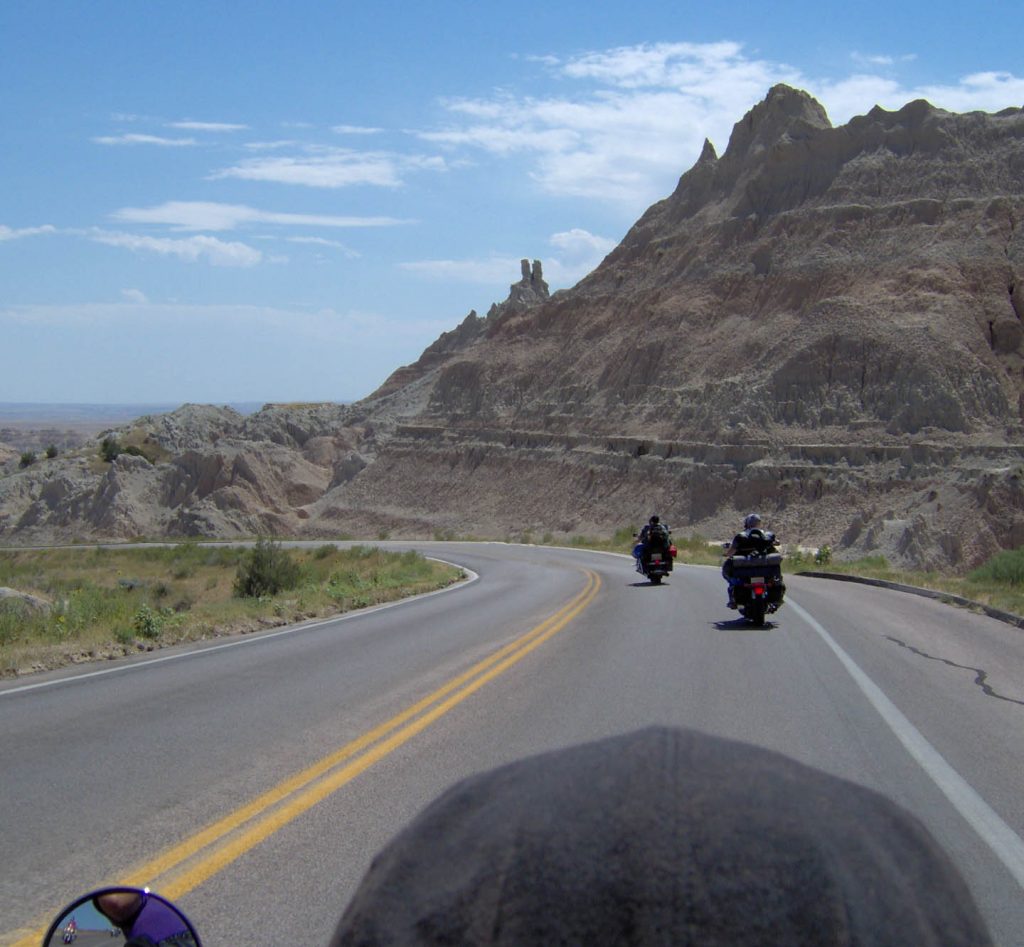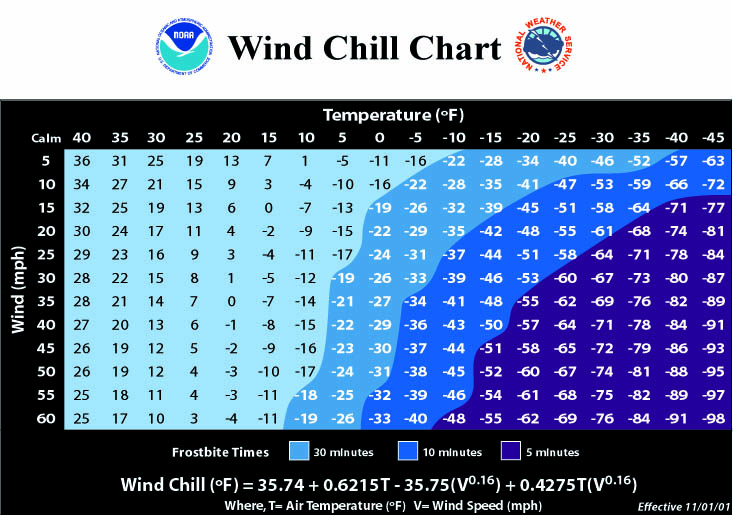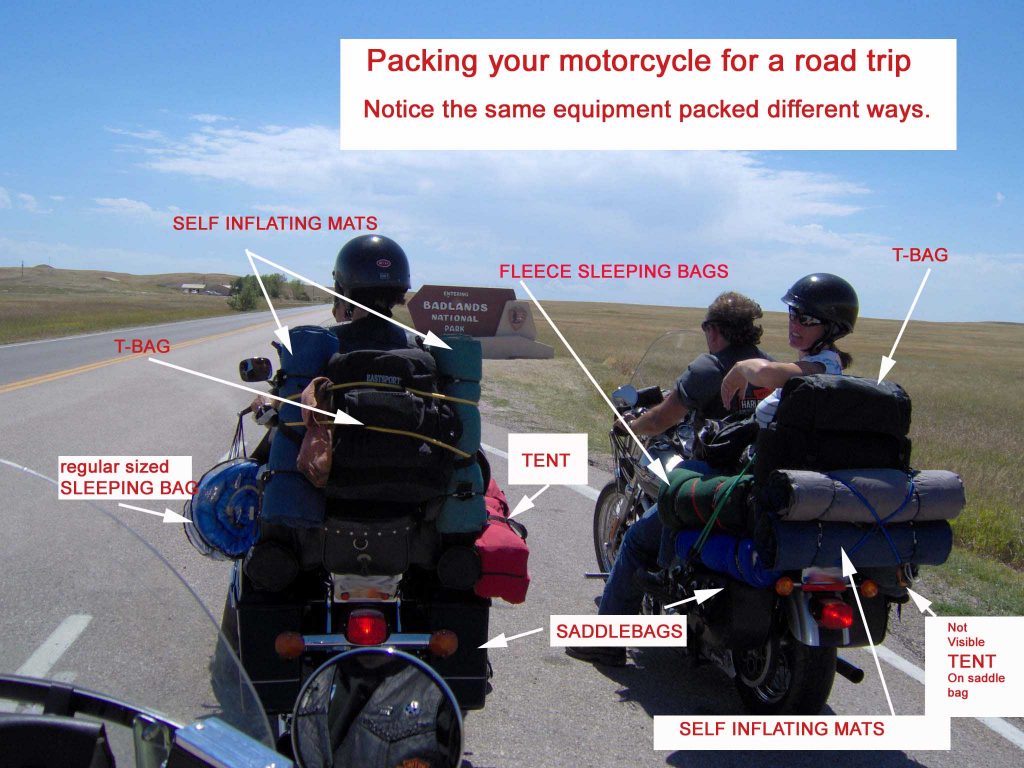Preparing for a trip on your motorcycle
Hundreds of thousands of motorcycle riders will be packing their motorcycles and hitting the highways this year on much anticipated road trips. For some it may be a yearly trek to the big motorcycle rally, some a vacation on the beach, others a tour of our beautiful national landmarks. Regardless of your destination, being prepared will make the journey an event you will remember for a lifetime.
Packing your bike for a ten day or longer trip is not only possible but accomplished by thousands of riders every year. There are two essential items that will make the trip much more bearable for those 500+ mile days. A sheepskin for your seat and a motorcycle windshield.
The sheep skin will help prolong the time before the butt burn begins to set in and the windshield will help eliminate fatigue your body gets from the wind. The pressure you endure to your chest, face, and arms from hours of 75+ m.p.h. wind, assuming it is a calm day, takes a toll on you that you might not realize if you have never used a motorcycle windshield. Everyone at camp will appreciate a more rested rider at the end of the day. For step by step instructions on chopping your windshield go to our page here.
For sleeping accommodations there are a lot of 2 man tents that roll up and attach to your luggage rack, saddle bags, or sissy bar easily. A self inflating mat has proven to provide a comfortable nights sleep for most riders, but let’s face it, after a day of highway travel from dawn to dusk you can almost sleep like a baby on gravel. Two of these mats pack up easily if you are traveling with a passenger.
A hard sided sissy bar bag (t-bag) provides ample space for your clothing and toiletries. Soft sided t-bags work as well, but provide fewer functions as a stable item to attach other items to. You can also strap your tent and mats to the back side of your t-bag if they are hard sided. You may need to pack your tent and mats on top of your saddle bags so it is best to pack items that you do not need frequent access to in these.
Shammies make great towels for the shower, they pack small, dry fast, absorb a lot. You are probably going to have a bungee cord or two involved in the packing, these work great between two trees or tents as a clothes line.
When packing toiletries remember LESS IS MORE. You want to be aware of the weight you are adding to your bike. Don’t be tempted to buy the family size Suave shampoo because it is less or the same price as the small empty bottle you went to buy in the first place. It takes up space and adds weight. Same goes with the toothpaste! A small waterproof bag, preferably with a shower hook, is useful for shower supplies. You will be able to bring everything into the shower stall with you and hang it from the shower head.
If you are heading to a motorcycle rally or on vacation chances are you are going to buy a t-shirt or two. Keep this in mind when packing your clothes. You may be purchasing a day or two of attire and will not need to pack it prior to the road trip.
Don’t forget a tool bag for roadside emergencies. Some companies sell tool bags for motorcycles already equipped. You should be familiar with tools you may need for your bike in case of emergency repairs. If you don’t know, you should get educated, check your manual for your motorcycle for many useful tips prior to heading off. If you do find yourself along the side of the road, tie a bandanna around your mirror, this will tell passing riders you need help. If you see a bike on the side of the road, stop to see if you can help.
Many riders wear their leathers as rain gear, which works fine unless you are in an all day rain, or an extended down pour. Leather gets very heavy when wet and does not always dry out overnight. If you plan to purchase rain gear, be sure it is made for motorcyclists, otherwise you end up with shreds of plastic flapping in the wind. One important feature to look for in rain gear is visibility. Riding on the interstate in pouring rain is stressful in itself, but when you disappear from view in the tire spray of a semi it is dangerous as well. Try to pick something with high visible color or at minimum, with reflective striping.
If you don’t live in a helmet law state and don't normally wear a helmet, you may need to wear one in states you are traveling through and to. Check the Insurance Institute for Highway safety website for a listing of laws by state. Be sure you have your helmet packed.
Every rider should have a knife on their belt, in their pocket, or easily accessible. The uses for a knife are endless when you are camping and traveling on a motorcycle.
Of course you should never think of heading out on a road trip without good tires on your motorcycle (you only have two-think about it!). Check all fasteners for tightness, check/change all fluids, check cables - 4 days into a road trip is not a good time to discover you should have replaced your throttle cable. We have an awesome break down on getting your motorcycle ready for a road trip and the T-CLOCS check list.
Have a map or GPS unit on board, try to plan overnight stops ahead of time so you don’t get caught on the road with extreme fatigue. Winging it is adventurous, but riding with extreme fatigue is dangerous. Be sure you get sufficient rest, hydration, and food in between long legs of travel.
There are few, if any, events, places, trips, that you cannot ride your motorcycle. Be prepared and enjoy the ride!
Have a safe trip!
 By: Pam
By: Pam


